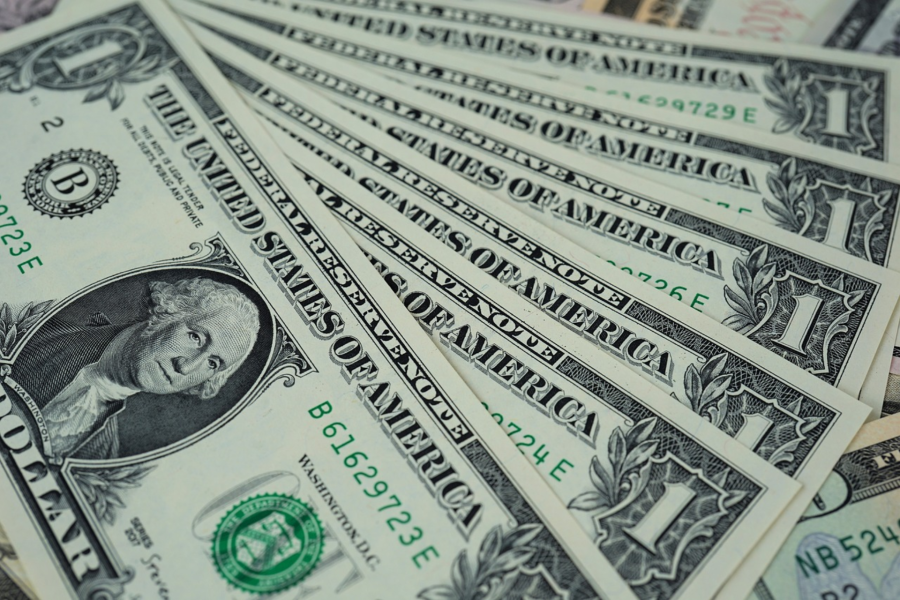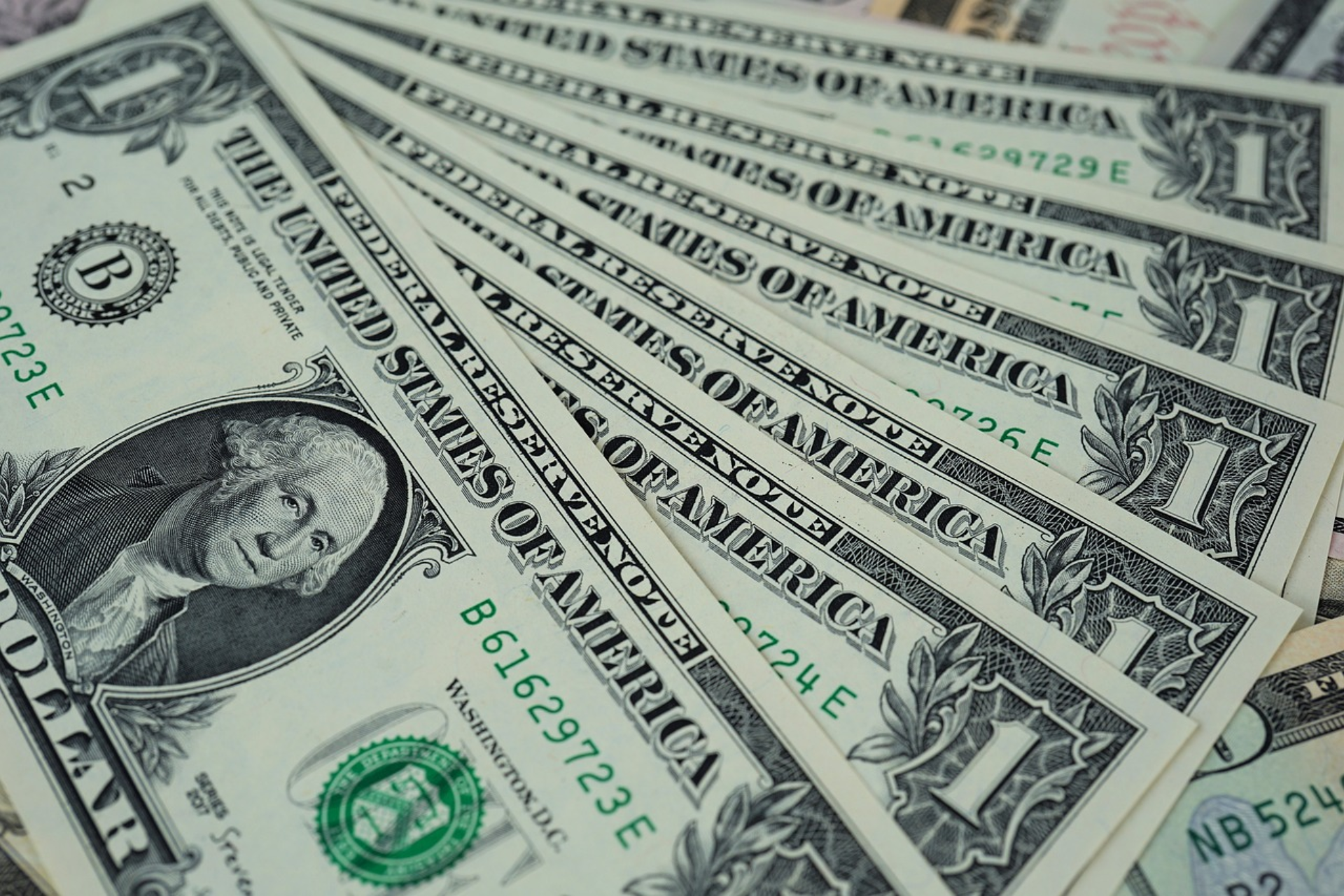
Dollar steady as growth worries weigh; fragile yen draws warning
The dollar held near a six-month peak on Wednesday as jitters over China and global growth weighed on risk appetite, while the yen was close to a 10-month low.

Reuters: The dollar held near a six-month peak on Wednesday as jitters over China and global growth weighed on risk appetite, while the yen was close to a 10-month low, drawing the strongest warning since mid-August from Japan’s top currency diplomat.
U.S. DOLLAR HELD STEADY
The yen strengthened 0.19% to 147.42 per dollar in Asian hours, but was near 147.82, the lowest since Nov. 4 it touched earlier in the session. The Asian currency has hovered around the key 145 per dollar level for the past few weeks, leading traders to keep a wary eye on signs of intervention by Tokyo.
“We won’t rule out any options if speculative moves persist,” Japan’s top currency diplomat Masato Kanda told reporters on Wednesday. Kanda, Japan’s vice-minister of finance for international affairs, has been the central figure in the country’s efforts to stem the sharp decline of the yen since last year. “The comments are a warning that intervention is on the radar,” said Chris Weston, head of research at Pepperstone. However, he said the comments are unlikely to stall the yen’s descent.
ALSO READ: Who is the richest person in the world today? Top 10 list – 6 September 2023
Japan intervened in currency markets last year in September when the dollar rose past 145 yen, prompting the Ministry of Finance to buy the yen and push the pair back to around 140 yen. “We are probably going to see more of such verbal intervention if yen moves are deemed to be one-sided and excessive,” said Christopher Wong, a currency strategist at OCBC in Singapore. Against a basket of currencies, the dollar was at 104.69, not far off the six-month high of 104.90 touched overnight. Economic data from China and Europe on Tuesday fanned some fears of slowing global growth, pushing investors to scramble for the dollar.
“Dollar strength remains the dominant play,” OCBC’s Wong said. Interest rates staying higher for longer and relative U.S. growth resilience are factors that continue to underpin support for the dollar, according to Wong. China’s yuan fell to a 10-month low against the dollar before paring some losses on Wednesday, as state banks stepped in to offer support to prevent the local currency from sinking further.
Data from the euro zone and Britain on Tuesday showed a decline in business activity last month, while a private-sector survey showed China’s services activity expanded at the slowest pace in eight months in August. The euro was up 0.13% at $1.0736 in Asian hours, having breached a three-month low of $1.0705 overnight. Sterling was last at $1.25725, up 0.07% on the day. It also touched a three-month low of $1.25285.
ALSO READ: South Africans continue to spend more on restaurants – Stats SA
Federal Reserve Governor Christopher Waller said on Tuesday the latest round of economic data gives the U.S. central bank space to see if it needs to raise interest rates again and that he saw nothing that would force a move toward boosting the cost of short-term borrowing again. Markets are pricing in a 93% chance of the Fed holding rates steady later this month and a 55% chance of no more hikes this year, according to CME FedWatch tool. The Australian dollar was little changed at $0.63795, after diving 1.3% on Tuesday following weak data from China.
BRITISH POUND
Reuters: A deteriorating global growth picture sent the pound to a 12-week low against the dollar on Tuesday after a survey showed business activity in Britain contracted last month. The UK S&P Global/CIPS composite Purchasing Managers’ Index dropped to 48.6 in August from 50.8 in July, the lowest since January, although it was revised up from an earlier estimate of 47.9. The services sector PMI printed at 49.5, below the half century mark that separates growth from contraction. “The forward-looking indicators in today’s services survey remained downbeat as companies reported a slight decline in new business,” said Martin Beck, chief economic advisor to the EY Item Club.
“The more dovish signals from today’s survey are consistent with the view that we are now close to the end of the current monetary tightening cycle.” The Bank of England, which has raised its key interest rate 14 consecutive times to 5.25%, is expected to go ahead with a 25 basis point rate hike later this month. Markets are pricing in another hike after that to 5.75% by early next year even as other major central banks, such as the U.S. Federal Reserve and European Central Bank, appear close to the end of their respective tightening cycles.
ALSO READ: ZAR kicks off the week on the back foot
“Even though rate pricing has come back from the peak, there’s still the risk that the Bank of England delivers less hiking than the market is priced for,” said Adam Cole, chief currency strategist at RBC Capital Markets. “When there’s a pivot to start pricing in the first rate cuts, that will be a very negative sterling event,” Cole added, noting that he is still negative on Britain’s currency.
The pound was last down 0.5% against a stronger dollar at $1.2565, having earlier dropped to $1.2529, its lowest level since June 13. Cole noted that much of today’s move in the pound is dollar driven, “with sterling in the middle of the pack”. The dollar index, which measures the U.S. currency against six peers including the pound, was up 0.4% at 104.61, getting a lift after weak activity data from Europe and China. Meanwhile, the euro gained 0.1% against the pound to 85.55 pence.
SOUTH AFRICAN RAND
Reuters: The South African rand weakened on Tuesday against a stronger dollar as the country suffered the worst power cuts on record. At 1516 GMT, the rand traded at 19.2350 against the dollar, about 0.5% weaker than its previous close. The dollar last traded more than 0.6% stronger against a basket of global currencies. “With the U.S. closed most markets were stable, except the rand that fell sharply,” said Rand Merchant Bank analysts in a research note.
ALSO READ: Who are the richest South Africans in the world today? – 6 September 2023
The rand tumbled after South Africa’s struggling state utility Eskom reinstated the worst rolling blackouts on record, which mean up to 12 hours of power cuts for most households per day. In the second quarter, when Eskom somewhat eased the levels of outages, the country’s economy recorded a greater than expected expansion, local data showed on Tuesday.
S&P Global survey showed South Africa’s private sector activity grew for the first time in six months in August as improved demand led to firms boosting output. On the stock market, the Top-40 and the broader all-share indexes closed around 0.5% lower. South Africa’s benchmark 2030 government bond was weaker in afternoon deals, with the yield up 7.5 basis points to 10.410%.
GLOBAL MARKETS
Reuters: World stock indexes eased and benchmark 10-year Treasury yields rose to their highest in more than a week on Tuesday as oil prices jumped and investors weighed prospects for further U.S. interest rate hikes. Orders for U.S. factory goods declined less than expected in July, according to data. At the same time, economic data in China and Europe fueled some worries about slowing global growth. A private-sector survey on Tuesday showed China’s services activity expanded at the slowest pace in eight months in August as weak demand continued to dog the world’s second-largest economy. Data from the euro area and Britain also showed a decline in business activity last month, with the dominant services industry in both regions falling into contraction.
ALSO READ: Newspaper front pages from around the world, 5 September 2023
“Interest rates are continuing to rise,” and investors are focused on the Federal Reserve’s rate path, said Paul Nolte, market strategist, Murphy & Sylvest Wealth Management in Elmhurst, Illinois. Investors were also digesting comments on Tuesday from Fed Governor Christopher Waller, who said the latest round of economic data was giving the U.S. central bank space to see if it needs to raise rates again, while noting that he currently sees nothing that would force a move toward boosting the cost of short-term borrowing again.
The Fed has been raising rates to curb inflation. The Dow led declines among the three major stock indexes on Wall Street, even as higher oil lifted shares of some energy companies. Oil prices rose to their highest since November after Saudi Arabia and Russia extended their voluntary supply cuts to the end of the year. The Dow Jones Industrial Average fell 195.74 points, or 0.56%, to 34,641.97, the S&P 500 lost 18.94 points, or 0.42%, to 4,496.83 and the Nasdaq Composite dropped 10.86 points, or 0.08%, to 14,020.95.
The pan-European STOXX 600 index lost 0.23% and MSCI’s gauge of stocks across the globe shed 0.60%. In Treasuries, the yield on the benchmark U.S. 10-year Treasury note rose 9 basis points to 4.26% after reaching 4.268%, its highest level since Aug. 25. The U.S. dollar rose to a near six-month high against a basket of currencies as the Chinese economic data fueled worries over global growth and pushed investors into the safe-haven U.S. currency.
ALSO READ: Lady R report released as a ‘summary’
The Australian dollar fell more than 1% and hit a fresh 10-month low after Australia’s central bank earlier on Tuesday kept interest rates steady for a third month. Brent crude futures rose by $1.04, or 1.2%, to settle at $90.04 a barrel, while U.S. crude futures gained $1.14, or 1.3%, to settle at $86.69 a barrel. Spot gold dropped 0.7% to $1,925.48 an ounce. U.S. gold futures fell 0.74% to $1,925.50 an ounce.
Published by the Mercury Team on 6 September 2023
